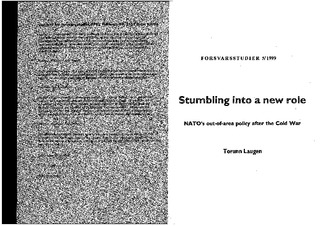| dc.description | Allied handling of conflicts outside the North Atlantic area has been a controversial issue since the creation of NATO. However, in spite of pressure from different members, a policy of non-involvement was firmly established during the Cold War. NATO as such, chose to limit it self to the collective defence of its own territory, as formal or informal co-operation between two or several members in other parts of the world was kept off the NATO agenda. The end of the Cold War did not bring any immediate change to this more or less established agreement. However, between 1992 and 1999 an incremental expansion of NATO’s out-of-area engagement took place.
By the end of the decade NATO had several thousand troops on the ground in Bosnia Herzegovina, and had undertaken an extensive air campaign against the former Yugoslavia. This study relates how and why this complete change of policy took place. It also tries to point out some of the implications. | no_NO |
